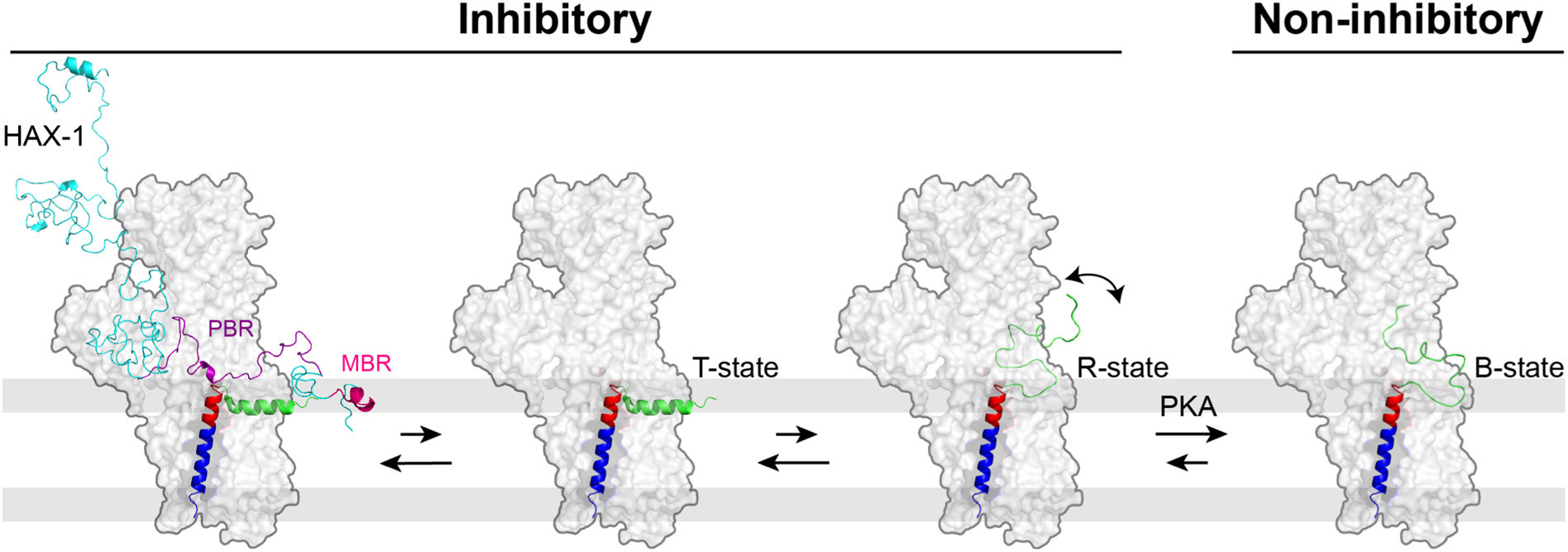Larsen, E. K.; Weber, D. K.; Wang, S.; Gopinath, T.; Blackwell, D. J.; Dalton, M. P.; Robia, S. L.; Gao, J.; Veglia, G.. BBA - Biomembranes, 2020, 1862, 183034
Hematopoietic-substrate-1 associated protein X-1 (HAX-1) is a 279 amino acid protein expressed ubiquitously. In cardiac muscle, HAX-1 was found to modulate the sarcoendoplasmic reticulum calcium ATPase (SERCA) by shifting its apparent Ca2+ affinity (pCa). It has been hypothesized that HAX-1 binds phospholamban (PLN), enhancing its inhibitory function on SERCA. HAX-1 effects are reversed by cAMP-dependent protein kinase A that phosphorylates PLN at Ser16. To date, the molecular mechanisms for HAX-1 regulation of the SERCA/PLN complex are still unknown. Using enzymatic, in cell assays, circular dichroism, and NMR spectroscopy, we found that in the absence of a binding partner HAX-1 is essentially disordered and adopts a partial secondary structure upon interaction with lipid membranes. Also, HAX-1 interacts with the cytoplasmic region of monomeric and pentameric PLN as detected by NMR and in cell FRET assays, respectively. We propose that the regulation of the SERCA/PLN complex by HAX-1 is mediated by its interactions with lipid membranes, adding another layer of control in Ca2+ homeostatic balance in the heart muscle.

